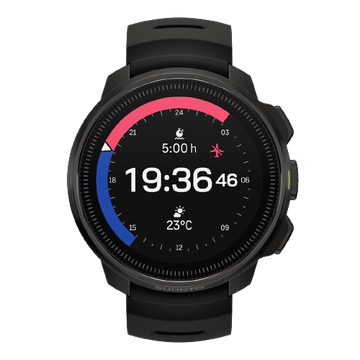Endurance training is a long-term endeavor, and progress may not always be linear or immediately noticeable.It requires patience, persistence, and a focus on gradual improvements over time. Tracking progress over longer periods and considering trends rather than short-term fluctuations is essential.
Athletes may have varying interpretations of their progress, and subjective feelings of fatigue, effort, and perceived improvements may not always align with objective measurements.
Athletes may experience periods of plateau where progress seems to stagnate despite consistent training efforts. This can occur due to the body's adaptation to training stimuli, requiring adjustments in training variables such as intensity, volume, and variety to continue progressing. Each athlete responds uniquely to training stimuli. Some individuals may experience rapid progress, while others may require longer periods to see noticeable improvements.
Factors such as genetics, age, training history, and recovery capacity contribute to this individual variability in progress. Endurance training progress can be affected by various external factors, including work, personal life, and environmental stressors.
Four ways to measure your progress
Without objective metrics and measurements, tracking your progress in endurance training can be challenging. It is important to incorporate tools and methods to obtain quantifiable data for evaluating progress accurately.
Here are four Suunto tools that help you objectively measure your progress.
Chronic Training Load (CTL)
Chronic Training Load serves as an indicator of an athlete's fitness level, representing the accumulated training load sustained over an extended duration. You will find your CTL graph in the Suunto app Training Zone’s Progress section. Each activity adds load to the overall and impacts the chronic load. (To get reliable data, make sure your individual intensity zones are set correctly in your Suunto. Learn more here.)
A consistent engagement in high-intensity or high-volume training leads to an increase in CTL, signifying an improvement in fitness. Conversely, reducing the training load or taking breaks from training results in a decrease in CTL, indicating a decline in fitness. It is important to note that CTL is not a direct measure of fitness.
The CTL is indicating the long-term training load, which has a high correlation with fitness gains.
Chronic Training Load Ramp Rate
The Chronic Training Load Ramp Rate measures the rate at which CTL increases over time. A higher ramp rate suggests rapid fitness gains due to an increasing training volume or intensity. You can find your current CTL ramp rate in the Suunto app Trainig Zone’s overview section as well as on your Suunto Race watch as a mini widget.

However, a high ramp rate also raises the risk of overtraining or burnout if not properly managed. The ramp rate is a good tool to follow when preparing for a race or an event, while gradually increasing weekly training volume and intensity.
Determining the ideal ramp rates for Chronic Training Load (CTL) can vary depending on several factors, including an individual's training history, fitness level, goals, and ability to recover. It is important to note that ramp rates should be personalized and gradually increased to avoid excessive stress and potential overtraining.
For beginners or athletes returning from a break or an injury, it is advisable to start with conservative ramp rates. Aim for a weekly increase in CTL between 2–5 units to allow the body to adapt gradually without overwhelming stress.
Athletes with moderate training experience and consistent training can aim for slightly higher ramp rates. A weekly increase of 5 units in CTL or 15–20 in a 6-week period may be appropriate to promote progressive adaptation and performance improvements while still allowing for adequate recovery.
Experienced and highly trained athletes may tolerate higher ramp rates due to their well-developed aerobic capacity and training background.
Remember, gradual and sustainable progress is key in training. It is generally safer to err on the side of caution and slightly underestimate ramp rates rather than risk excessive stress and potential setbacks. Regular monitoring, proper recovery, and paying attention to signs of overtraining are crucial to ensure a healthy and successful training progression.
Progress Follow-up with Testing

Fitness tests are employed to measure and evaluate an individual's physical abilities and characteristics. These tests assess overall physical fitness while identifying specific strengths and weaknesses.
Suunto offers various SuuntoPlus sport apps for testing purposes, such as the Functional Threshold Power Test, Anaerobic Running Test, Cooper Test, and the Beep Test. These assessments aid in monitoring progress and informing training adjustments based on objective performance metrics. (Learn more about testing your fitness with SuuntoPlus sport apps.)
Compare Similar Efforts
Comparing similar workouts allows for the evaluation of performance changes and an understanding of current fitness levels. By performing workouts of comparable duration and intensity every week, athletes can track changes in heart rate, pace, and power.
For instance, maintaining a steady heart rate during weekly long runs while observing a progressive increase in pace signifies improved aerobic fitness. Similarly, comparing the performance in threshold tempo runs or easy morning runs provides insights into an individual's anaerobic and aerobic conditioning, respectively. It is essential to consider heart rate and pace data alongside subjective fatigue sensations and overall workout and race performance.
You can use the new summary tool in Suunto app’s Training Zone to compare efforts. For example, if you have been doing weekly long runs, it is easy to find these in the summary tool. The you can evaluate if your pace has been getting more efficient with the same intensity/heartrate.
If you want to make it easy to find the workouts you wish to compare, you can also use tags in the Suunto app. Add a specific tag to your test workouts and you can easily find them all using the app’s search functionality.
































































































